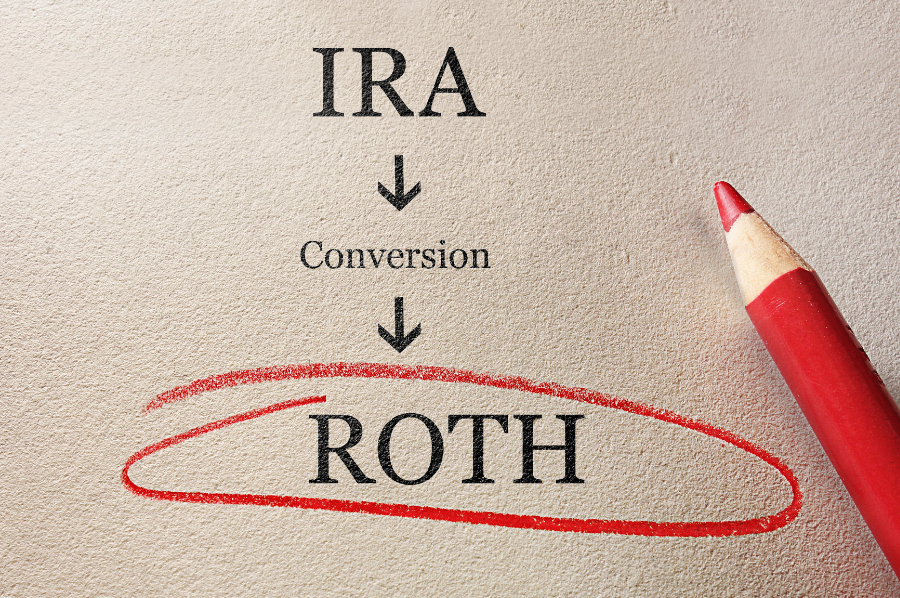


February 16, 2022
If you're self-employed, then you already know that you're on your own when it comes to the benefits enjoyed by those employed by a company. Between getting a business off the ground and dealing with its daily challenges, it's very common for those who are self-employed to skip planning for their retirement. In fact, many business owners delay planning because of the following mindsets:
Think of retirement planning as an additional investment strategy that complements your business. All of the retirement plans listed below are tax-deferred accounts that can save you thousands of dollars a year while you're growing your business, and provide a steady source of funding to you years down the road.
The best retirement plans for the self-employed include:
IRAs have been around for years; they were one of the first tax-deferred retirement plans that the IRS introduced. They make up the cornerstone of many people's retirement plans, mainly because of the ease of investing in this type of plan. IRA accounts can be set up with just about any brokerage in a matter of minutes, and it's possible to invest in just about anything, including real estate or stocks.
Contribution Limit: Individuals under 50 years of age can put aside $6,000 in 2022. This amount increases to $7,000 if they are 50 or older.
Tax Advantage: All contributions to a traditional IRA are tax-free. That is, you'll be able to deduct the amount of your contribution from your total income on your income tax statement. For many self-employed persons, traditional IRAs are a perfect way to reduce their tax burden in high earning years. By placing money into one of these accounts, the tax advantages alone guarantee at least an automatic 10% return on the money, with some business owners able to get a tax advantage of 30% or more.
Roth IRAs are a little more modern than the traditional IRA, but they have some very useful tax advantages.
Contribution Limit: Individuals under 50 years of age can put aside $6,000 in 2022. This amount increases to $7,000 if an individual is 50 or older.
Tax Advantage: All money that goes into a Roth IRA is taxed, but all withdrawals from the account are tax-free. In recent years, changes have been made that allow funds from these accounts to be withdrawn to pay for the initial purchase of a primary residence and some higher educational expenses.
For a self-employed person, that means these accounts can function as a long-term savings plan with high-potential for significant gains. Not paying taxes in the future means that it will be possible to withdraw funds from this account in years when your business is doing well without paying a higher level of taxes.
People who have worked for a company before are probably familiar with how a 401(k) works. These accounts are very similar, but they are set up for an individual. Note that these accounts cannot be set up for employees of your business; you will need to set up a 401(k) plan if you want to include any employees.
Contribution Limit: Contribution limits for 2021 were high; the lesser of $58,000, with an additional $6,500 catch-up contribution or 100% of earned income. For 2022, it's even higher; the lesser of $61,000, plus a $6,500 catch-up contribution or 100% of earned income. The total limit on the income that can be used to factor your contribution is $305,000 in 2022.
Tax Advantage: Contributions to these accounts are made before income taxes are taken out. After age 59 ½, all withdrawals are taxable. For this reason, these accounts are a great way to move large amounts of money in years when the tax burden will be too high, and pay taxes in later years when you believe your tax burden will be lower.
Because of the very high contribution limits, these accounts are often recommended to self-employed persons who are selling a large portion of their business or who are expecting a large amount of profit. They are often used to spread out a tax burden from these high earning years over several later years.
A SEP IRA (Simplified Employee Pension Individual Retirement Arrangement) is a type of retirement plan that is designed for self-employed individuals and small business owners. It is similar to a traditional IRA, but it has higher contribution limits and a simpler setup process.
Contribution Limit: The contribution limit for a SEP IRA is the lesser of 25% of the employee's compensation or $58,000 (2022 limit, subject to change in the future).
Tax Advantage: SEP IRA is good for self-employed people because it allows them to set aside a significant amount of money for retirement while also receiving a tax deduction for their contributions. Additionally, SEP IRAs have a lower cost and less documentation/admin needed than other types of retirement plans such as a solo 401(k) or defined benefit plan. Under the Secure 2.0 Act, Roth contributions are now allowed for SEP IRA accounts.
A Simple IRA (Savings Incentive Match Plan for Employees) is a type of retirement plan that is designed for small businesses with 100 or fewer employees. It is similar to a traditional IRA, but it has slightly lower contribution limits and a simpler setup process.
Contribution Limit: The contribution limit for a Simple IRA is $13,500 (2022 limit, subject to change in the future) for employees under 50 years old and an additional $3,000 catch-up contribution for employees 50 or older. Employers are also required to make contributions, either through a matching contribution (up to 3% of the employee's compensation) or a non-elective contribution (2% of the employee's compensation)
Tad Advantage: Simple IRA plan offers tax advantages to both employees and employers. Employee contributions to a Simple IRA are tax-deductible in the year they are made, which can lower the employee's taxable income for that year. Employers can also deduct their contributions to the plan as a business expense. Additionally, the money in a Simple IRA grows tax-free until it is withdrawn, which can help it grow faster than if it were taxed every year.
After reviewing the five best retirement plans for the self-employed, it's important to evaluate things like administrative debt, age, contribution goals and more before choosing a plan that's best for you. Our talented team of financial advisors at Heritage Financial Planning can help assess the best plan for your short and long-term goals.
You May Also Like
Written By: Heritage Financial Planning Team

A quality retirement plan is established by an employer and is designed to provide retirement income for the employer's designated employees and their beneficiaries. This plan must match the Internal...
Read More
The SECURE Act 2.0, signed into law in December 2022, significantly changes retirement plans and tax code provisions. While keeping track of all the updates can be challenging, retirees need to...
Read More
Saving for your financial future is one of the most important responsibilities that you have. To ensure that you are able to reach your long-term financial goals, there are several tax-advantaged...
Read More
10440 N Central Expressway
Suite 1540
Dallas, TX 75231
214-446-2100
Site Links